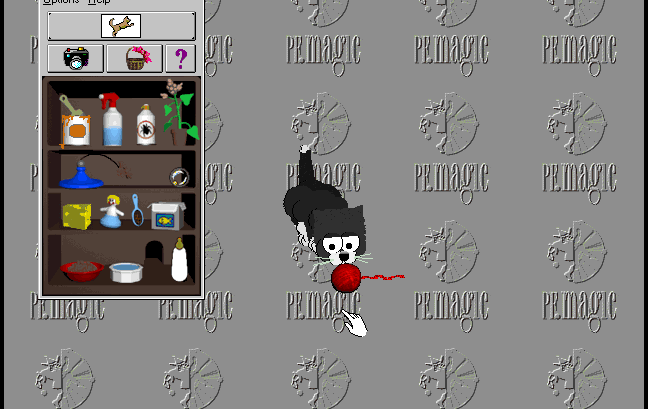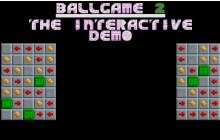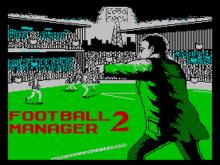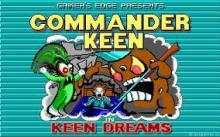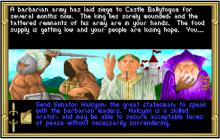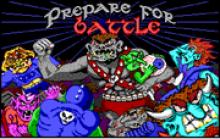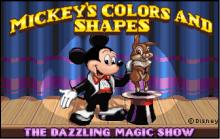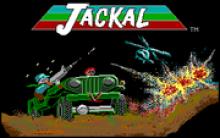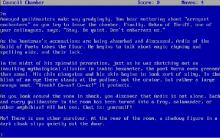Catz: Your Computer Petz
How to play Catz: Your Computer Petz
Catz PC Game Controls
- Left Mouse Button: Pet the cat, select toys, or drop items on the desktop
- Right Mouse Button: Opens the menu for feeding or grooming tools
- Drag & Drop: Move objects or toys onto the screen
- Esc Key: Exit the game or pause interaction
- F1 or Help Menu: Access basic game instructions if available
Most of the gameplay is entirely mouse-driven. There's no rush or time limit—just casual companionship.
Catz: Your Computer Petz Description
Catz: Your Computer Petz is a 1996 virtual pet game for Windows PCs, developed by PF.Magic. It allowed players to adopt, care for, and interact with a kitten directly on their desktop. These cats were not confined to a game window—they freely wandered over your desktop and interacted with icons and open apps. The game blended entertainment and companionship, giving users a virtual cat that behaved with surprising realism. It stood out as one of the first truly interactive PC pet simulators of its time.
A Brief History of the Catz PC Game
PF.Magic released Catz as part of its growing “Petz” series, which began with Dogz in 1995. The success of these games led to multiple sequels—Catz II through Catz 5—each adding more breeds, items, and features.

In the early 2000s, Ubisoft acquired the Petz franchise and produced updated versions like “Catz 2006,” targeting a younger console audience. However, many fans of the series still favor the original 1996 release for its simplicity and charm. Catz was more than a game—it was a piece of interactive software that gave personality to your computer screen.
Unique Gameplay Mechanics and Features
Catz wasn't a typical game with levels or objectives. Players adopted a cat from a small selection of breeds—such as Orange Shorthair, Calico, or Russian Blue—and gave it a name. Once adopted, your kitten would explore your desktop, play with digital toys, curl up and nap, or get into mischief by knocking over objects. The interaction was entirely mouse-driven: you could drag toys onto the screen, pet your cat with the cursor, and use the inventory to feed or groom it. Over time, your pet developed unique behaviors based on how you treated it, making each experience personal and different.
Desktop Integration and Real-Time Interaction
What set Catz apart from other PC games of the 90s was its integration into the Windows desktop environment. Your pet didn’t exist in a game world—it lived alongside your folders, icons, and open applications. Cats could “sit” on a window, swat at your mouse pointer, or even hide behind program windows. This design blurred the line between software and reality, creating a sense of companionship rather than play. If left alone, your pet would behave independently, reinforcing the illusion of a real animal with its own moods and habits.
The Evolution of the Petz Franchise
After Catz and Dogz gained popularity, PF.Magic expanded the Petz franchise with “Oddballz” and Petz versions 3–5. Later versions included more breeds, breeding mechanics, and the ability to adopt multiple pets at once. With Petz 5, players could raise kittens and puppies together, share pet files with friends, and install user-created content. These features deepened the gameplay and extended the life of the series beyond novelty. Though later Ubisoft Catz games (2006–2010) moved to handheld consoles and used 3D graphics, they lacked the quirky desktop presence that defined the originals.
Modern Games That Echo Catz’ Design
Several newer games have borrowed elements from Catz. Neko Atsume (mobile) emphasizes passive interaction and collection, similar to how Catz rewards observation and patience. Cattails, a hybrid RPG/life sim, draws from the idea of living as a cat with routines and relationships.

Virtual pet apps like My Talking Tom follow the “feed-play-groom” loop, but in a more guided, mobile-friendly way. Still, none quite replicate the randomness and autonomy of the original Catz. The game's strength was that it felt alive—sometimes stubborn, sometimes sweet, but always unpredictable.
How to Play Catz on Windows 10 or 11
Since Catz is a 16-bit Windows game, it won’t launch on modern 64-bit systems without help. The easiest solution is to use OTVDM (WineVDM), which allows 16-bit programs to run on modern Windows without setting up a virtual machine. For those with technical skills, you can install Windows 95 or 98 in VirtualBox, then install Catz within that environment. Another option is to use DOSBox with Windows 3.1 installed, though that setup is more advanced and only applies to early Catz versions. Be sure to use legal sources if you attempt to download a copy.
Troubleshooting and Compatibility Tips
If Catz crashes or doesn’t start, check your file version—it may require older Windows DLLs. Running the executable in “Windows 95” or “Windows 98” compatibility mode can sometimes work. Avoid installing the game in Program Files on modern systems; instead, use a dedicated folder like C:\Games\Catz. Also, ensure that you’re using a 32-bit compatible version, as 64-bit systems do not support native 16-bit applications. For the best experience, try it on a retro PC or virtual machine that mimics its original environment.
Is Catz Abandonware and Free to Play?
Technically, the game is abandonware—meaning it is no longer sold or supported by the publisher. That said, the rights are still owned by Ubisoft, so distribution remains a legal gray area. Many fans share the game for personal, nostalgic use, especially through retro gaming communities. If you choose to download it, use caution and avoid unofficial repackaged versions that may include malware. It's always best to back up your files and scan with antivirus tools.
Final Thoughts on Catz: Your Computer Petz
Catz: Your Computer Petz captured the imagination of 90s PC users in a way that few games have. It wasn’t just about cute graphics or simple mechanics—it was about building a daily ritual with a digital creature. The game’s ability to create genuine emotional responses through minimal interaction was ahead of its time. In an era of fast-paced games and complex systems, Catz remains a reminder of how simple ideas can leave a lasting mark. For fans of retro virtual pet games, it’s still worth revisiting—with a little help from modern tools.
Catz are the next in linze of Computer Petz. Catz live on your desktop and they don't mind sharing it with you. Your Catz enjoy being petted. You can play with them and watch them stalk the mouse across your documents. In screen-saver mode they enjoy taking their CatNapz.
Cheats/Hints/Walkthroughs for Catz: Your Computer Petz

Catz: Your Computer Petz - additional information







